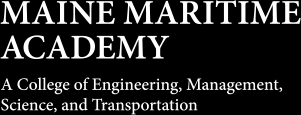Moments in a Squall
I am Captain of the U.S. Brig Niagara based in Erie, Pennsylvania. Niagara is a square-rigged ship owned by the Commonwealth of Pennsylvania and operated by Flagship Niagara League. It was built in 1988 as a reconstruction of the Niagara that fought in the Battle of Lake Erie during the War of 1812.
Niagara was the relief flagship for Commodore Oliver Hazard Perry who defeated the British squadron and is known for the quote, “We have met the enemy, and they are ours.”
Our mission is to share the history of Niagara, the battle, the War of 1812 and the preservation of square-rig seamanship. We offer two-week sail training programs on the Great Lakes for high school, college and adult students who become immersed as part of the crew and operation of the ship. The ship serves as a unique platform to provide impactful experiences for all who sail on board.
A memorable moment for me occurred a couple of summers ago on the first night of a passage with new trainees. There had been a lingering, temperamental weather pattern that had developed and was being monitored by the on-watch.
I was First Mate and off-watch in my cabin when I heard rain coming into the open skylights of the wardroom, which told me it was unexpected. The ship is equipped with radar and other electronics, but a squall had developed undetected nearby.
The Captain and I arrived on deck as the wind continued to increase to what would become about 40 knots. We had to turn the ship downwind as is done with square-rigged ships, instead of into the wind as with fore-and-aft vessels.
We called up the off-watch crew and trainees. I eased the main topsail halyard to lower the yard and take in the sail while giving commands to the team who took in the fore-topsail and remaining sails—all while the ship was being taken off the wind.
When the squall passed, it was gray and still—a stark contrast from just moments before.
I mustered everyone on deck for a debrief; the adrenaline of the response was still flowing. I told everyone they had responded well to the situation and explained what had transpired. For the students, it was likely a once-in-a-lifetime experience.
It came down to training, communication, and teamwork—just as it did 200 years ago, and as it does every day for those who make their living as mariners. These are fundamentals I first learned at MMA.█
—By CAPT. CHRISTOPHER CUSSON ’06
Drawing: GEORGE HENRY JENNINGS




Post Comment
Comments are moderated and will be reviewed prior to posting online. Please be aware that when you submit a comment, you agree to the following rules:
Maine Maritime Academy reserves the right to delete any comment that does not comply with these guidelines and is not responsible or liable in any way for comments posted by its users. If you have a message for the editor, please email mariner@mma.edu.
Class Notes
View All >Read More
Read More